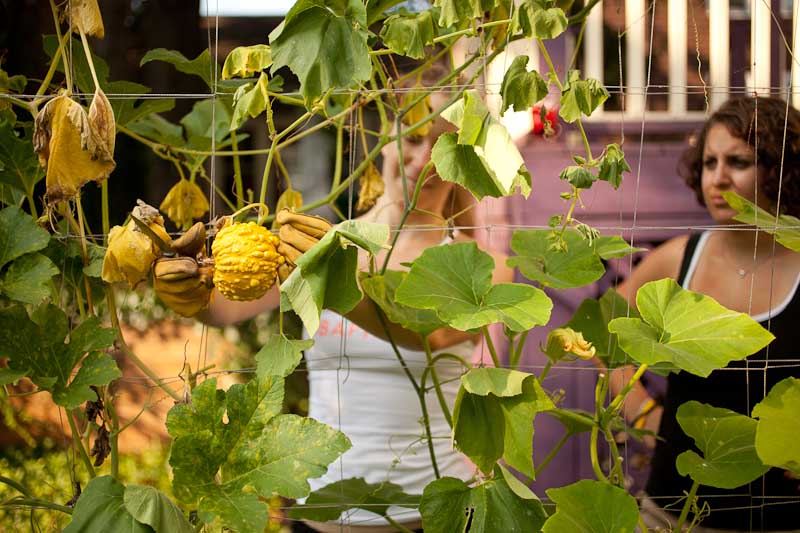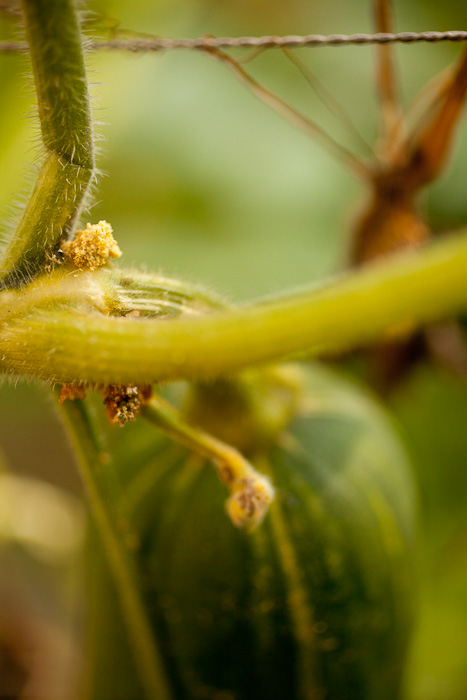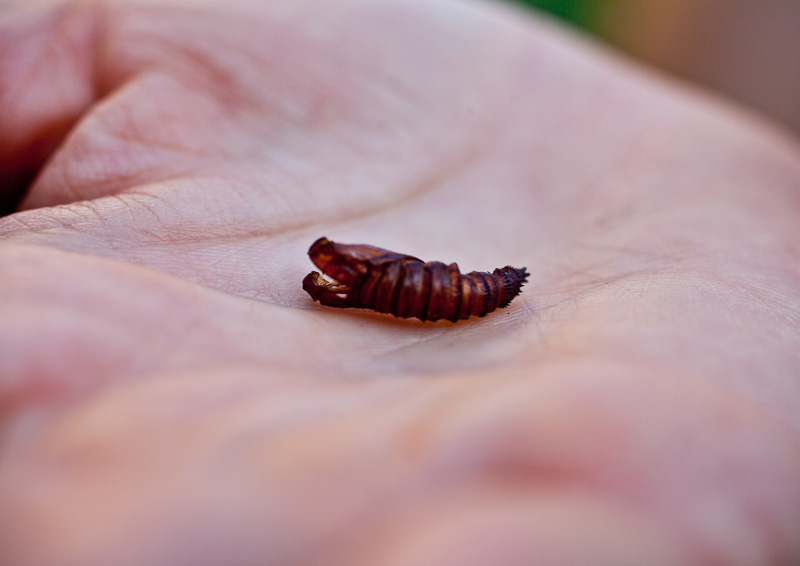Our garden keeps many secrets. Even before we tuck our first seeds in the ground, stories are being written that will affect the lives of our soon-to-be seedlings. Soil structure and fertility, disease agents, weather, pH, are only a tiny fraction of the complex language of a plant’s life which, little by little, we’re starting to learn:
Limp leaves? Needs water.
Stunted carrots? Remove more rocks.
Wet smelly compost? Add more browns.
Buckshot Kale? Fertilize like crazy and cross your fingers.
But no matter how much we water, listen, fertilize, research, curse, weed and nurture the life growing out of our soil, all of our efforts sometimes still yield barren soil, blossoms that won’t fruit and the frustrating feeling that we’re not ultimately in control here.
Today’s story is not one of those stories. Todays story is a triumph of the most satisfyingly tangible variety. It was told to us by Winter Squash.

For the last month, Winter Squash hung limply on the trellis and no amount of watering was helping. We had kept it safe from the powdery mildew, the weather was just right and its neighbor Zucchini had given us fruit after fruit all summer long. We were about at a point where we were ready to give up, Winter Squash was already there, when we noticed this:

And this:

Those tiny brown sawdust-look-alike piles just didn’t seem right.
So based on a tip, we decided to operate. Knife in hand, we cut along the grain of the stem, opened the incision and…

…out came the epitome of death and garden destruction: A squash borer!
The terrible looking bugs were eating Winter Squash from the inside out.

As organic farmers, there often isn’t much left to do once when pests and disease has set in. It is more about figuring out how to prevent it the next year. Justice however would have its day.

In the beautiful system that is our yard, pest turns to snack, snacks to poo, and poo to compost, which will enrich the soil and fortify next year’s winter squash against attack.

The plants survived the operation surprisingly well, but these were two of the last fruits from Winter Squash.

Upon closer inspection we found signs of trouble to come. Some of the borers had successfully matured, spun cocoons (pictured below) and had hatched into orange red and black wasp-like moths. 
And of course, because Winter Squash was such a hospitable host, the borer moth left its eggs (below) along a stem to continue the cycle of life — rather, of death and destruction.

Winter Squash is gone now. It leaves behind as its legacy two pumpkins, a knobby gourd, a handful of butternut squash and the next generation of Darth Vader Squash Eaters. But compared to the mystery that normally surrounds plant death and failure to thrive in our garden, we can live with this. We’re still not in control, but we can at least literally cut out the beast at the heart of so much frustration. It is a diagnosis. An end to a mystery. One less secret between us and the life we seek to nurture.
And for those of you who know us, that brings this household much peace.
_____________________________________________________________________

Erik and his wife Dina are farmers-in-training who currently reside in Boston, Mass. They write more about their mission to discover the divine through living closer to the earth at their website:
Plough and Stars Project — The real-time making of a modern-day farm family – One couples quest to grow anew, from the ground up.
______________________________________________________________